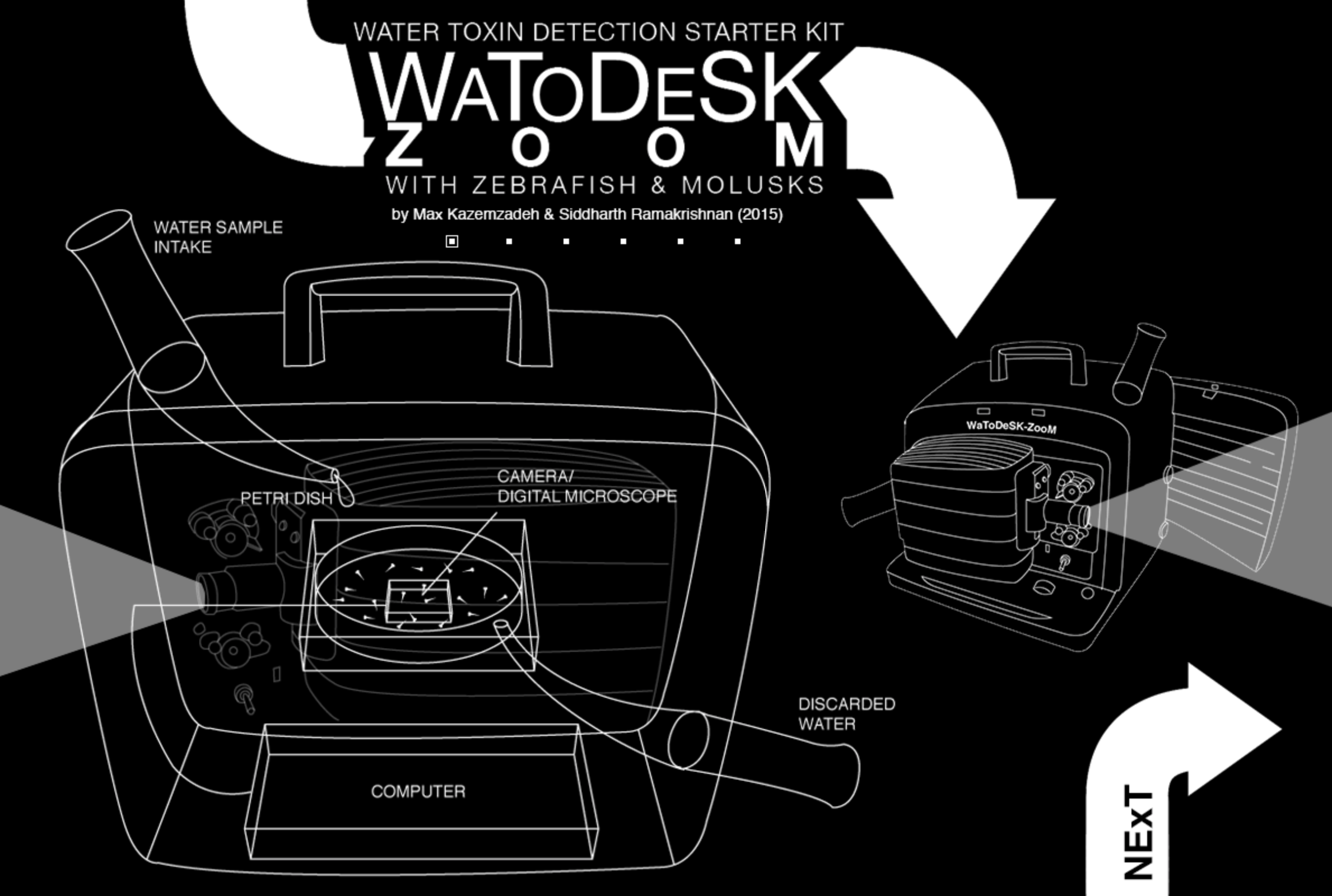SEE PROJECT WEBSITE HERE:
https://maxkazemzadeh.com/watodesk/
WaToDeSK-ZooM: Water Toxin Detection Starter Kit w/Zebrafish and Molusks
The WaToDeSK-ZooM is a handheld mobile water-quality testing lab and advocacy projector, that uses a micro-computer vision system and skin-salinity sensor system to transform zebrafish and mollusks into organic/bio-sensors who’s behavioral and physiological reaction to water containing free-radicals from plastics (monomers) and other pollutants/toxins are tracked, measured, and compared to a control, and represented as real-time video/graphic data-diagrams that makes clear to spectacle viewers in the urban environment the impact these toxins have on human-like microscopic life-forms. Monomers, a toxin undetectable by any man-made device, were initially developed to serve as agents for birth-control/pregnancy-inhibition whose suspension was due to the negative affects monomer consumption had on the human body. Ironically, once these monomers were taken out of circulation as birth control, this monomer was reused in the creation of plastic that would ultimately be used to store food and drink (water bottles, commercial food packaging, etc), and due to the pollution, found their way back into the main waterways and into our drinking water. WaToDeSK-ZooM is developed as a mobile water-testing lab and projection spectacle for urban environments, specifically to demonstrate how industrialization has had a direct affect on water pollution, which impacts organisms presently used in research centers to discover the negative impact these toxins have on human health. Zebrafish and mollusks are two living organisms, similar to the human body, that have no regulation or limitation in regards to lab testing, and which shows the challenges researcher’s face in finding effective ways to urgently resolve water pollution issues. WaToDeSK-ZooM’s guerrilla real-time digital projection spectacles bring the nano-neuro-lab into the public sphere, inviting criticism while targeting the public sphere as an environment for dialogue.

Leave a Reply